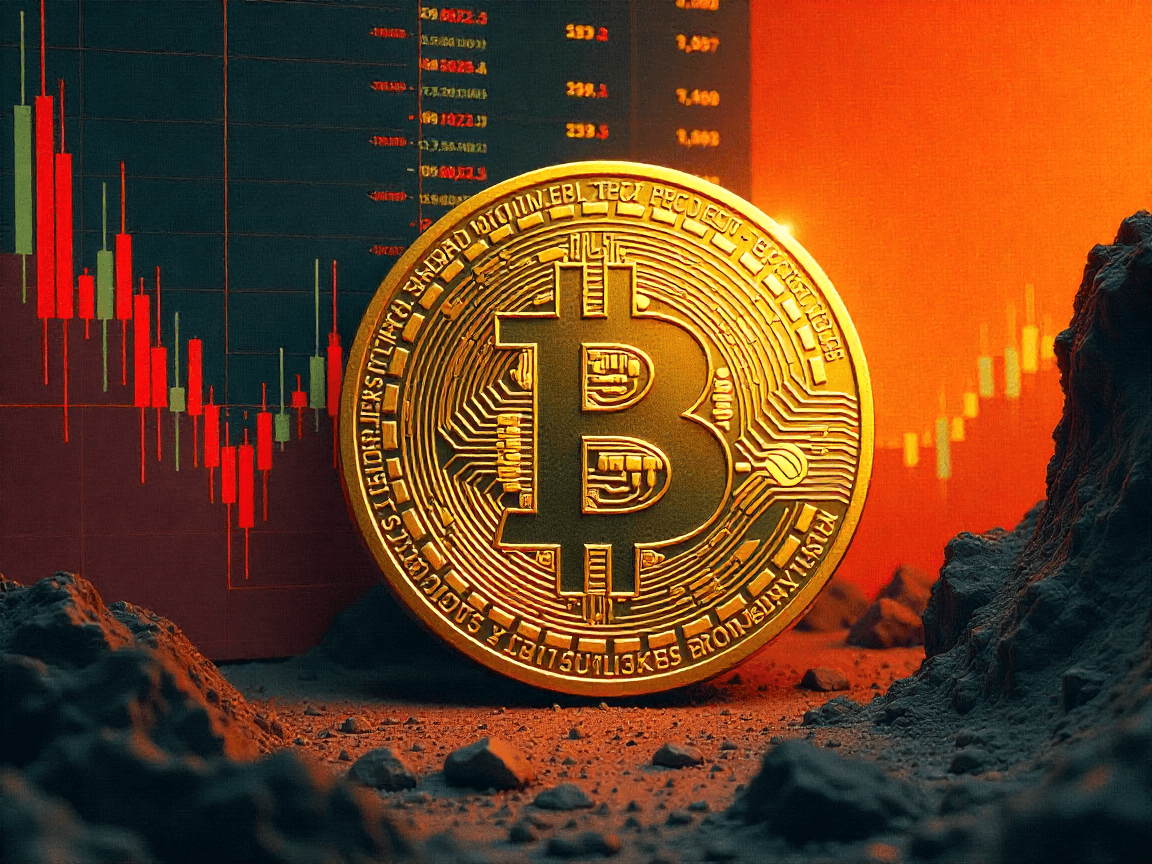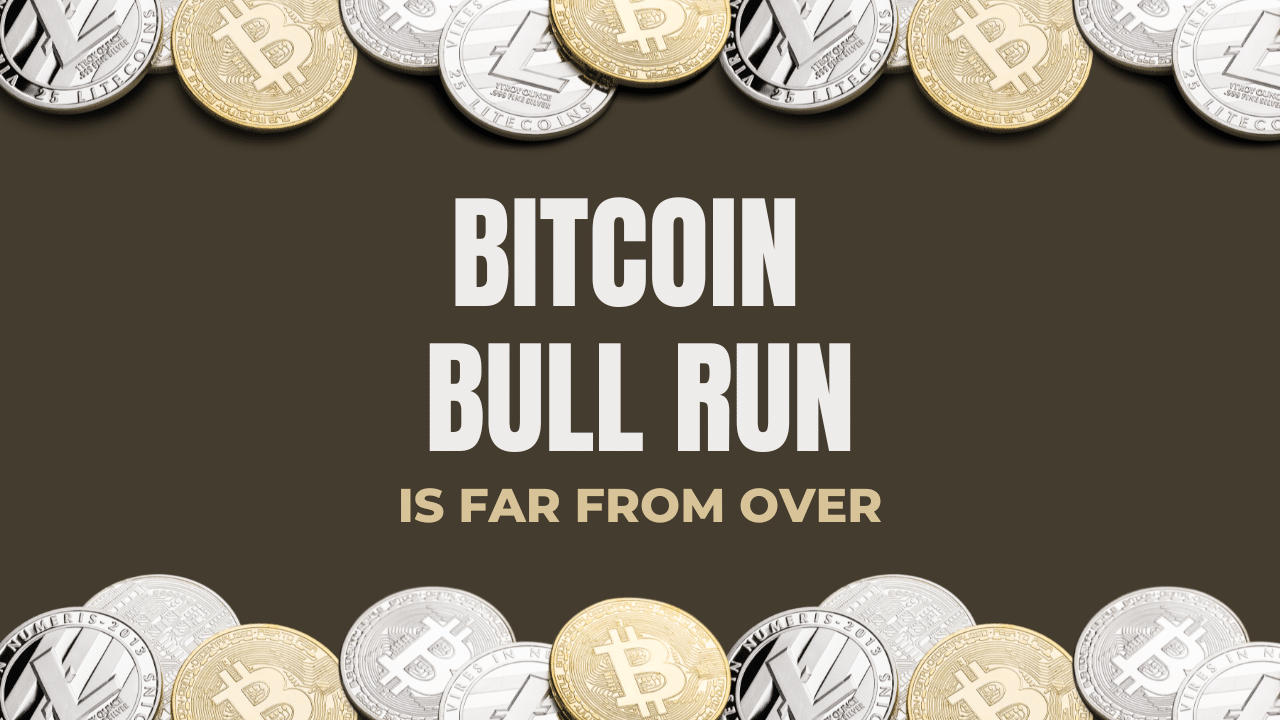Bitcoin Futures Traders Refuse to Capitulate Even as BTC Price Drops to $89K
Key Takeaways
- Despite Bitcoin’s price dropping to $89,000, futures traders are remarkably resilient, refusing to capitulate, which signals a significant shift in market psychology.
- This steadfastness indicates increasing institutional maturity and a deeper, long-term conviction in Bitcoin’s fundamental value proposition.
- Key drivers for this resilience include growing institutional participation, a strategic “buy the dip” mentality among traders, and the adoption of more sophisticated risk management strategies.
- The anomaly has profound implications for financial innovation, de-risking digital transformation initiatives for businesses, and fostering greater stability for the Web3 ecosystem.
- Future market movements will be influenced by factors such as funding rates, open interest, institutional inflows, regulatory developments, and broader macroeconomic conditions.
Table of Contents
Understanding the Landscape: Bitcoin Futures and the Power of Derivatives
The world of digital assets is no stranger to volatility, a characteristic that often defines its cutting edge appeal and inherent risks. However, recent movements in the Bitcoin (BTC) market have presented a compelling anomaly that warrants close attention, particularly from business professionals and entrepreneurs navigating the evolving financial landscape. Despite a significant price correction seeing BTC revisit the $89,000 level, a figure that would typically trigger widespread panic and selling pressure, Bitcoin futures traders have remarkably refused to capitulate. This steadfastness in the derivatives market offers a profound signal, hinting at a potential shift in market psychology, increased institutional maturity, and a stronger underlying belief in Bitcoin’s long-term value proposition. For those looking to understand the deeper currents shaping cryptocurrency and blockchain, this resilience is not merely a trading anomaly but a bellwether for the future of digital finance and its integration into the global economy.
To fully grasp the significance of this non-capitulation, it’s essential to understand what Bitcoin futures are and why their behavior is such a critical indicator. Bitcoin futures are financial contracts that obligate the buyer to purchase, or the seller to sell, Bitcoin at a predetermined price on a specified future date. Unlike spot trading, where assets are exchanged immediately, futures allow traders to speculate on the future price of Bitcoin without owning the underlying asset directly. They are a cornerstone of the broader derivatives market, which in traditional finance, is vast and complex, serving vital functions like hedging, risk management, and price discovery.
In the cryptocurrency world, derivatives have rapidly gained traction, mirroring the evolution of traditional markets. Their importance lies in their ability to provide leverage, allowing traders to control larger positions with less capital, and to bet on both rising (long) and falling (short) prices. This makes them highly sensitive to market sentiment. Capitulation, in market terms, refers to a period of intense, widespread selling driven by panic and a complete loss of hope among investors, typically marking the bottom of a bearish trend. When a significant asset like Bitcoin experiences a sharp price drop, futures markets often see a cascade of liquidations as leveraged positions are closed, leading to further price declines and a clear sign of capitulation.
The absence of such a response in the face of BTC dropping to $89,000 is therefore highly unusual and thought-provoking. It suggests that a fundamental change might be underway in how participants perceive and interact with Bitcoin’s market cycles. Is this a sign that the market is becoming more robust, less susceptible to short-term emotional swings, and driven by a more strategic, long-term outlook? The implications stretch far beyond mere trading profits, touching upon the very stability and potential for integration of digital assets into mainstream financial systems.
The Current Market Anomaly: BTC at $89K and Unyielding Trader Behavior
The scenario presented by Bitcoin’s recent dip to the $89,000 level, while potentially hypothetical in specific figures but representative of a significant downturn, typically sends shockwaves through the market. Historically, such steep declines have been met with widespread panic, especially in highly leveraged futures markets. Traders, fearful of further losses, often rush to close their positions, triggering a cascade of liquidations that can exacerbate the price fall. This “fear factor” often leads to capitulation, where even conviction holders give up, selling their assets at a loss.
However, the current situation paints a remarkably different picture. Despite the BTC price revisiting $89,000, Bitcoin derivatives markets have remained stable. This stability is not merely a lack of panic; it suggests an active resistance to the typical bearish response. What could be driving this unprecedented resilience? Several factors likely contribute to this phenomenon, pointing towards a maturing market structure:
The Growing Institutionalization of the Crypto Market
Firstly, the growing institutionalization of the crypto market plays a significant role. Unlike the early days dominated by retail investors, today’s market sees substantial participation from hedge funds, asset managers, and corporate treasuries. These entities often have longer investment horizons, more sophisticated risk management strategies, and a deeper conviction in Bitcoin’s long-term value proposition. They are less likely to be swayed by short-term price fluctuations and may even view dips as accumulation opportunities. Their presence introduces a stabilizing force, mitigating the knee-jerk reactions often seen in retail-heavy markets.
Strategic “Buy the Dip” Mentality
Secondly, traders might be exhibiting a strategic “buy the dip” mentality, not just in spot markets but also in derivatives. This indicates a strong underlying belief that Bitcoin’s intrinsic value, driven by its fixed supply, decentralized nature, and role as “digital gold,” will eventually lead to recovery and new all-time highs. This conviction is often bolstered by macro-economic factors, such as inflation concerns, geopolitical instability, and a search for alternative stores of value, which many believe Bitcoin addresses.
Sophistication of Trading Strategies
Thirdly, the sophistication of trading strategies has evolved. Traders are no longer just speculating on price direction but are employing complex hedging strategies, arbitraging across different exchanges, and using options to manage risk. This allows them to maintain positions even during downturns, as they may be hedged elsewhere or have a calculated risk exposure that can withstand volatility. This strategic depth reduces the likelihood of forced liquidations and cascading selling.
Negative News or Macroeconomic Pressures Priced In
Lastly, it’s possible that much of the negative news or macroeconomic pressures that would typically trigger a market downturn have already been priced into the market. If traders anticipate a challenging economic environment or regulatory shifts, they might have adjusted their positions beforehand, making the actual price drop less surprising or impactful to their long-term outlook.
This anomaly is a powerful signal that the cryptocurrency market, particularly Bitcoin, is evolving beyond its speculative roots. It’s developing robust internal mechanisms and attracting participants with a long-term vision, moving it closer to becoming a mature, integral part of the global financial system.
Expert Takes
“The steadfastness of Bitcoin futures traders, even amidst a significant price dip to $89,000, is a potent indicator of the market’s increasing maturity,” remarks a prominent market analyst. “This isn’t merely a lack of panic; it’s a strategic stance reflecting deeper institutional involvement and a collective conviction in Bitcoin’s enduring value proposition. We’re observing a critical shift from purely speculative trading to a more sophisticated, long-term investment horizon.”
An industry observer adds, “The resilience in derivatives markets suggests that the ‘HODL’ mentality, once associated primarily with spot holdings, is now extending into more complex financial instruments. Traders are not just holding; they’re strategically positioning, hedging, and accumulating, signaling a belief that current valuations present a significant opportunity rather than a cause for capitulation.”
Broader Implications for Business and Web3
The unwavering stance of Bitcoin futures traders has profound implications for business professionals, entrepreneurs, and anyone engaged with digital transformation and financial innovation. This phenomenon is not isolated to the trading desks; it ripples through the entire ecosystem, influencing how businesses perceive, adopt, and leverage blockchain solutions and cryptocurrencies.
Financial Innovation and Market Maturation
The stability observed in Bitcoin derivatives markets is a testament to the maturation of the digital asset class. For financial institutions, this resilience signals that Bitcoin is becoming a more reliable and predictable asset, capable of supporting more complex financial products and services. This paves the way for the development of more sophisticated ETFs, structured products, and lending protocols, which can attract a wider range of institutional investors. Businesses reliant on capital markets for growth or treasury management can look forward to a future where crypto-backed instruments offer innovative avenues for financing and investment, reducing reliance on traditional, often less efficient, financial rails. This stability enhances the credibility of digital assets, making them more attractive for inclusion in diverse investment portfolios and financial strategies.
Digital Transformation and Operational Optimization
For businesses contemplating digital transformation, the stability in crypto markets, particularly in derivatives, is a crucial de-risking factor. Volatility has historically been a significant barrier for companies considering integrating crypto payments, holding digital assets on their balance sheets, or building blockchain-based supply chain solutions. When derivatives markets exhibit resilience, it means there are more robust tools available for hedging against price fluctuations. This allows businesses to manage foreign exchange risks more effectively, optimize treasury operations by holding a portion of assets in crypto without excessive exposure to sudden downturns, and integrate blockchain technology with greater confidence. Companies can leverage blockchain for secure, transparent, and efficient transactions, knowing that the underlying asset environment is becoming more predictable. This fosters a more conducive environment for operational optimization through decentralized ledger technologies, from tokenized assets to smart contract-driven logistics.
Business Efficiency through Blockchain Solutions
The underlying stability inferred from non-capitulating traders contributes directly to greater business efficiency. Blockchain solutions thrive on predictability and trust. If the value of the digital assets underpinning these solutions is less prone to extreme swings, businesses can plan budgets, manage projects, and execute strategies with greater certainty. For instance, companies using stablecoins backed by volatile assets (which are then hedged) or leveraging decentralized finance (DeFi) protocols for lending and borrowing will find the entire ecosystem more reliable. This enhanced reliability translates into reduced operational costs, improved risk assessment models, and the ability to unlock new revenue streams through innovative Web3 business models that were previously deemed too risky due to market volatility. Businesses can harness the transparency and immutability of blockchain for everything from intellectual property management to customer loyalty programs, knowing the foundational economic elements are stabilizing.
Web3 Development and Ecosystem Stability
A more stable Bitcoin market provides a stronger foundation for the broader Web3 ecosystem. Web3, encompassing decentralized applications (dApps), DeFi, NFTs, and the metaverse, relies heavily on the underlying value of cryptocurrencies for its economic models. When Bitcoin, the leading digital asset, shows resilience during downturns, it instills greater confidence across the entire crypto market. This confidence encourages developers to build more robust dApps, innovators to create sustainable tokenomics, and users to engage more deeply with decentralized platforms. Reduced volatility makes it easier to design long-term incentive structures, manage liquidity pools, and ensure the economic viability of decentralized autonomous organizations (DAOs). Entrepreneurs building the next generation of internet services on Web3 can do so with greater assurance that the foundational layer of digital value is solidifying, accelerating the pace of innovation and adoption. This stability is critical for transitioning from speculative ventures to viable, scalable business models within the decentralized internet.
The Road Ahead: What to Watch For
The resilience shown by Bitcoin futures traders is a powerful signal, but it is by no means the final word. The crypto market remains dynamic, and several key indicators will determine whether this stability translates into a broader market reversal or signifies a new, more mature equilibrium.
- Firstly, keep a close eye on funding rates in perpetual futures markets. Positive funding rates indicate that long positions are dominant and paying short positions, suggesting bullish sentiment. If funding rates remain relatively neutral or even slightly positive despite price weakness, it reinforces the idea of underlying strength. Conversely, sustained negative funding rates could signal renewed bearish pressure.
- Secondly, open interest – the total number of outstanding derivative contracts – is crucial. If open interest remains high or even increases during a price dip without triggering significant liquidations, it suggests that new money is entering the market or existing players are holding their ground, betting on a recovery. A sharp decline in open interest alongside a price drop would indicate capitulation.
- Thirdly, institutional inflows and outflows into regulated products like Bitcoin ETFs and ETPs will provide further clarity. Consistent inflows, even during volatile periods, underscore institutional conviction and a long-term accumulation strategy. Conversely, significant outflows could signal a shift in institutional sentiment.
- Fourthly, regulatory developments around the world will continue to shape market behavior. Clarity and favorable frameworks from major jurisdictions could unlock further institutional capital and mainstream adoption, reinforcing stability. Conversely, restrictive regulations could introduce new uncertainties.
- Finally, broader macroeconomic conditions – inflation rates, interest rate decisions by central banks, and global geopolitical stability – will always play a role. While the crypto market seems to be developing its own internal resilience, it is not entirely decoupled from the global economy. Understanding how these factors interact with the crypto market’s evolving internal dynamics will be key to predicting its next moves.
The market’s ability to withstand significant price pressure without mass capitulation points towards a higher degree of sophistication and long-term conviction among participants. This suggests a potential shift towards a more mature market, one that may be less prone to extreme boom-and-bust cycles, and more integrated into the global financial infrastructure.
FAQ: Frequently Asked Questions
What does “capitulation” mean in the context of Bitcoin futures?
In crypto markets, “capitulation” refers to a period of intense, widespread selling driven by panic and a complete loss of hope among investors, typically signaling the bottom of a bearish trend. It often leads to a cascade of liquidations in leveraged futures markets during sharp price drops.
Why is the non-capitulation of Bitcoin futures traders significant?
The refusal of futures traders to capitulate despite a significant price drop (like to $89,000) is highly unusual. It suggests a fundamental shift in market psychology, indicating increased institutional maturity, sophisticated trading strategies, and a strong, long-term belief in Bitcoin’s value, making the market more robust and less susceptible to short-term emotional swings.
What factors are contributing to this resilience?
Several factors contribute to this resilience: growing institutionalization of the crypto market, a strategic “buy the dip” mentality, the evolution of sophisticated trading and hedging strategies, and the possibility that much of the negative news has already been priced into the market.
How does this impact businesses and Web3?
This market stability de-risks digital transformation for businesses, enabling more confident integration of crypto payments and blockchain solutions. It fosters financial innovation by making Bitcoin a more reliable asset for complex products and improves business efficiency through more predictable blockchain solutions. For Web3, it provides a stronger, more stable economic foundation for decentralized applications, NFTs, and the metaverse.
What should investors watch for next?
Key indicators to watch include funding rates in perpetual futures, open interest, institutional inflows/outflows into regulated products (like Bitcoin ETFs), ongoing regulatory developments, and broader macroeconomic conditions such as inflation and interest rate decisions.
Conclusion
The remarkable refusal of Bitcoin futures traders to capitulate, even as BTC revisited the $89,000 mark, stands as a critical indicator of the cryptocurrency market’s evolving maturity. This anomaly transcends mere trading psychology; it signals a fundamental shift towards a more sophisticated, institutionally-backed landscape where long-term conviction often outweighs short-term panic. For business professionals, entrepreneurs, and anyone invested in digital transformation, this resilience offers invaluable insights.
It highlights how blockchain solutions and cryptocurrencies are steadily shedding their image as purely speculative assets, paving the way for greater integration into mainstream finance. The stability in derivatives markets directly connects to enhanced financial innovation, providing more reliable hedging tools and robust investment avenues. This, in turn, facilitates digital transformation by de-risking the adoption of crypto payments and blockchain-based systems within enterprises. Ultimately, it drives operational optimization as businesses can leverage the transparency and efficiency of decentralized technologies with greater confidence in the underlying asset’s stability.
The Web3 revolution, too, benefits immensely from this newfound market resilience, gaining a more stable economic foundation for the next generation of decentralized applications and internet services. As the crypto market continues to mature, understanding these nuanced shifts in trader behavior becomes paramount for strategic decision-making. The journey ahead will undoubtedly present new challenges, but the current steadfastness of market participants paints a picture of a digital asset space that is not merely enduring volatility but strategically navigating it, signaling a future where cryptocurrency and blockchain solutions are indispensable components of the global economy. Staying informed about these profound developments is not just an advantage; it’s a necessity for thriving in the digital age.



